I’m Ethan, I make cameras at Cameradactyl.com. A few months back I finished the initial prototypes for a new camera, the Brancopan, which is a 35mm panoramic camera that takes Mamiya press lenses. I wrote a whole article here on EMULSIVE about the process of designing and building this camera, as well as a little bit about why I am running a Kickstarter for it.
For this article, I wanted to put together a bit of a preview, as well as showing some pictures I’ve taken with the camera. I’ve had a working version of the Brancopan since this summer, and I’ve beat it around quite a bit, shot about a hundred rolls over three countries. I only have about 40 rolls scanned so far.
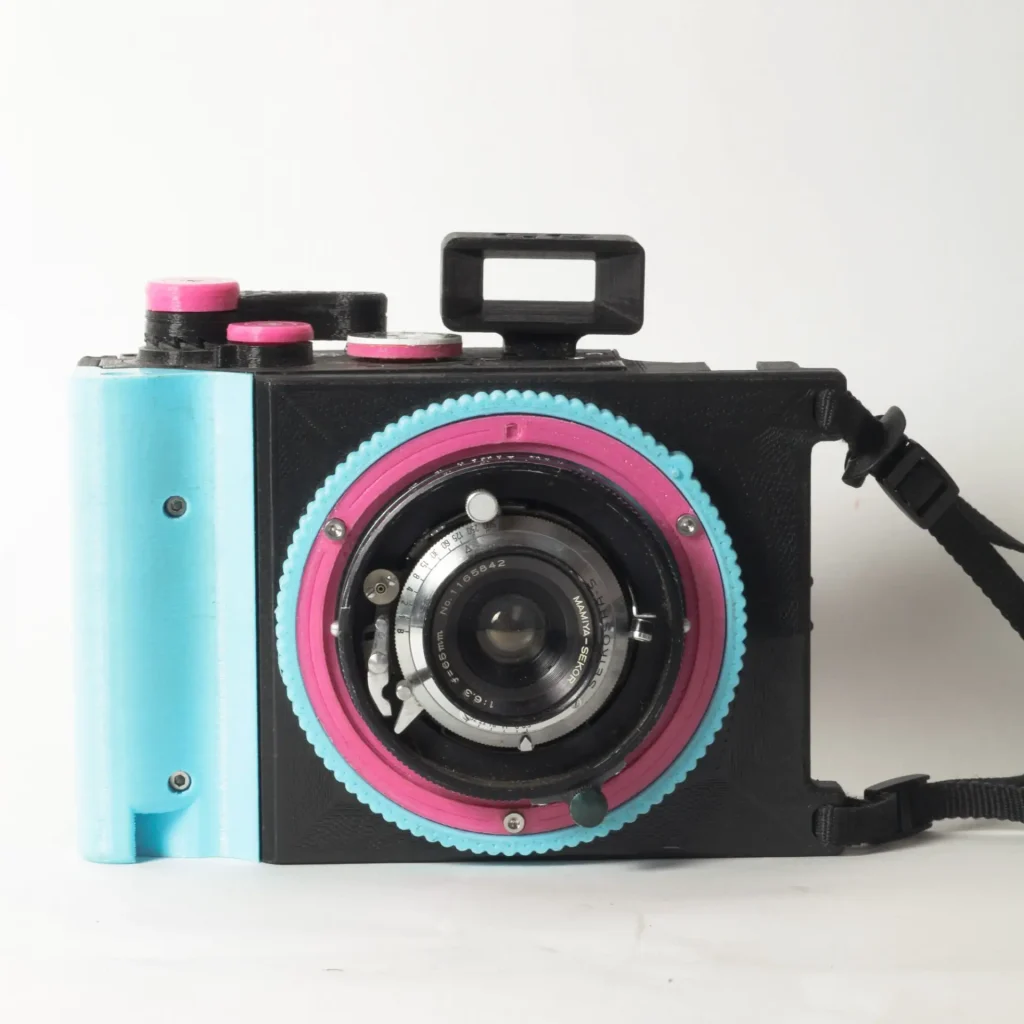
Before I give you my impressions of how the camera did, let me give you some basic specs and features of the camera: The Brancopan takes 35mm film, in standard cassettes, with standard leaders. It shoots panoramic frames which are 24x58mm or Cinema Anamorphic 1:2.4
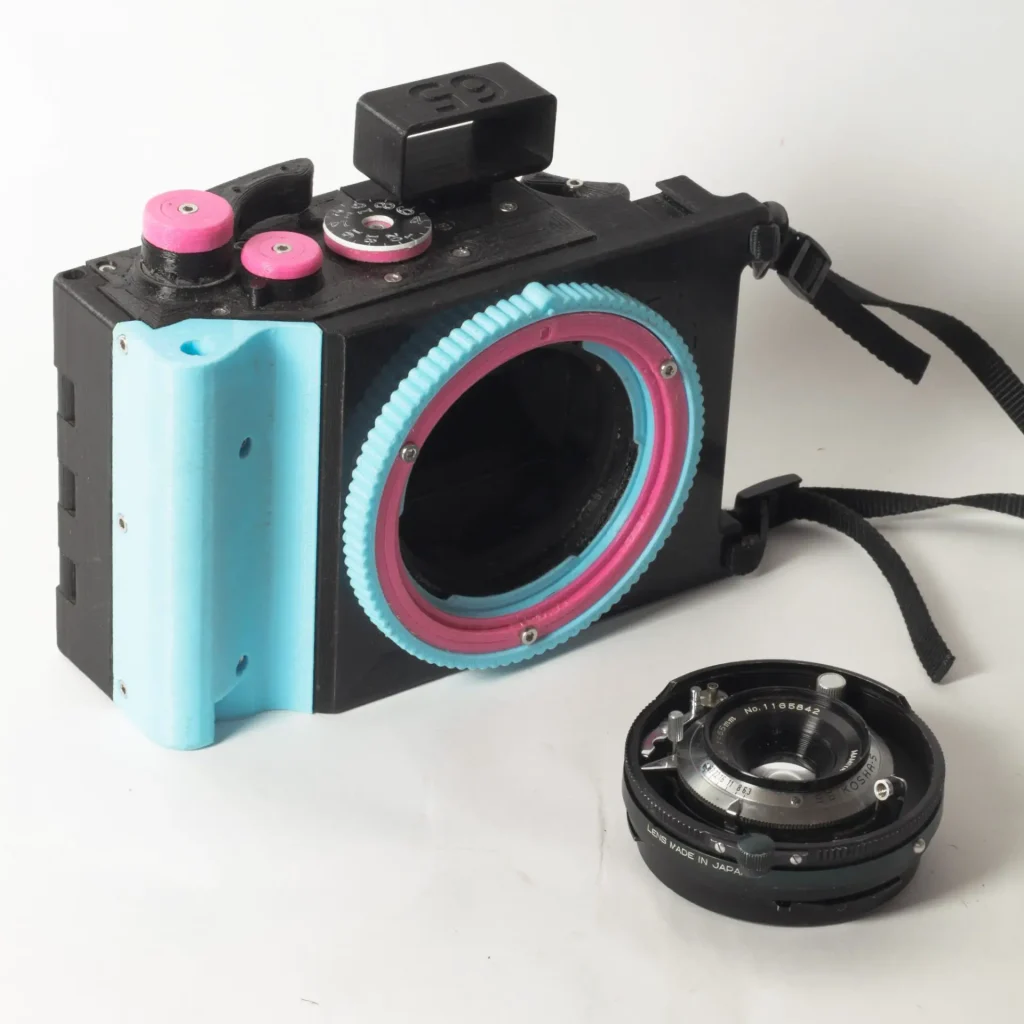
It takes any Mamiya press lens, and has a breach lock lens mount, shared with the CAMERADACTYL Homonculus. I use a 65mm f6.3 which has been de-limited to f4 on it almost exclusively. The lens is relatively inexpensive, small and light, reasonably sharp and reasonably wide. I’d like to try the camera with a 50mm too, but haven’t gotten that far yet. I have used it with 90 and 100mm lenses, my lenses of choice on the Homonculus 69, but they’re a little narrow on the format for what I like to shoot.
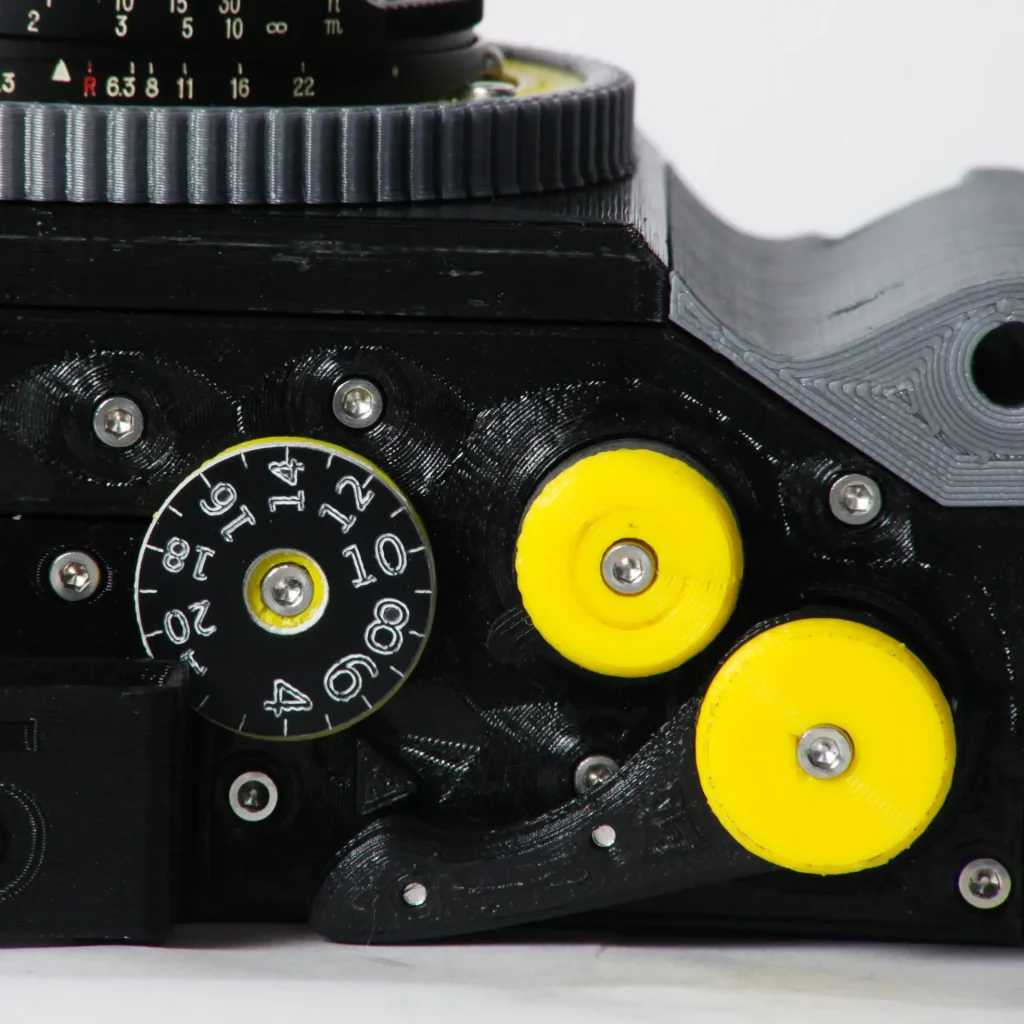
It has a film counter and spacing mechanism, and a geared ratchet winder with about a 180 degree throw. There is a rewind release collar next to the film wind lever, that can be rotated to disengage the winding ratchet mechanism, so that the film can be rewound. It has a spring loaded door lock, something familiar to many 35mm cameras.
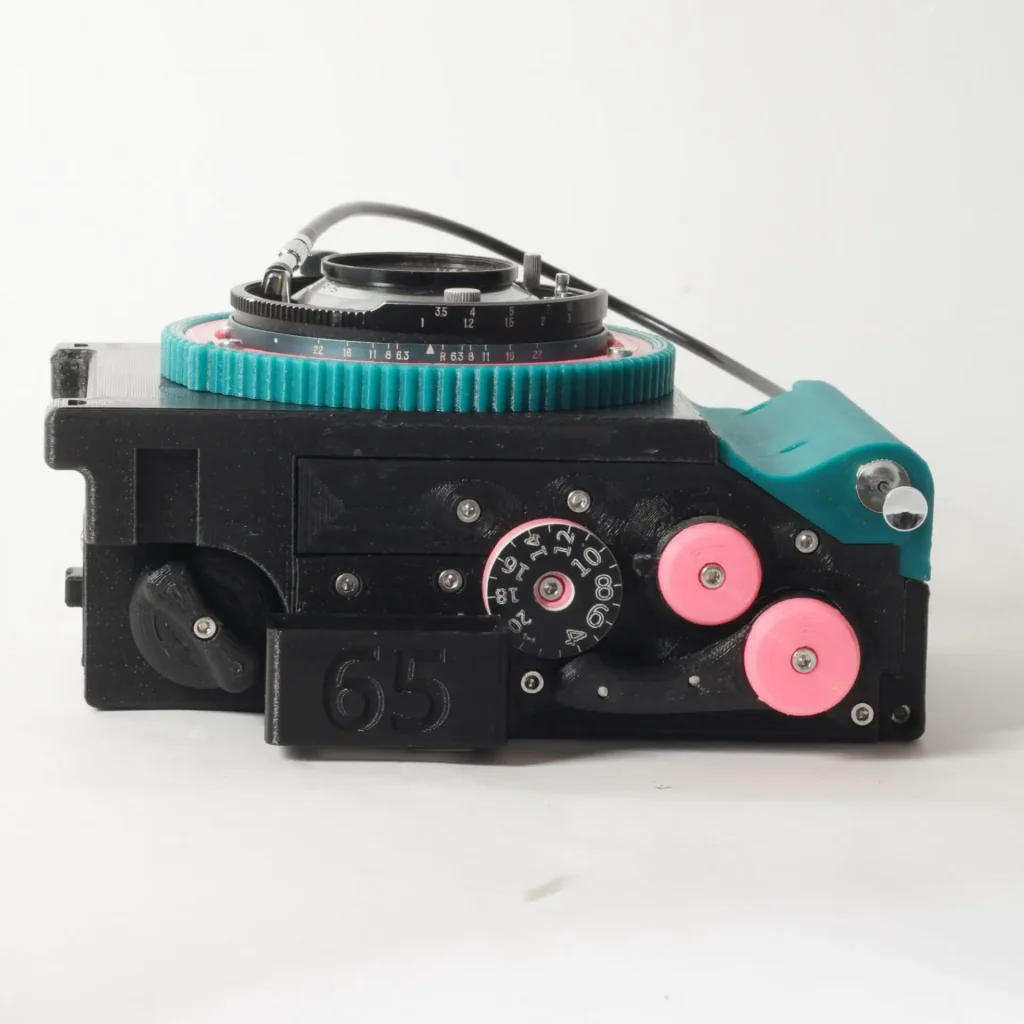
There are two cold shoes on top. I normally use mine with a viewfinder only, but sometimes will add a meter or accessory rangefinder. I haven’t used mine with a flash yet.
The camera has two beefy strap lugs on the left side of the body. These were stolen from the Homonculus design as well, but repositioned so that the camera hangs from the left side of the body, like a Mamiya 7. I’d recommend a fabric or leather strap end, rather than a metal clip or keyring to attach a strap to the camera. The lugs are super solid, and printed in a way that they really cant break off, but I have seen some brassing on metal cameras from a keyring type attachment to the strap, that I think could eat through plastic eventually.
The camera grip has a hole from the bottom to the top, with some bottom relief, to insert a cable release to use as a right hand grip shutter button.

On the bottom there is an on-axis tripod mount. The hole is threaded for standard large size tripod screws (3/8″ x 16), which can be adapted to 1/4″x20 with a little insert adapter.
Some other interesting points to note about the camera, which are less pertinent to shooting with it, than they are to constructing it:
- The camera can be built entirely on a sub- $200 printer.
- The materials required are plastic filament, some M3 hex screws, and 1-2 BiC pens that have clicky springs.
- The entire camera can come apart and go back together with 1 tool – an allen key, I keep one in my wallet. You’ll need some other small and very basic hand tools and sand paper to assemble the camera for the first time once the pieces come off the printer.
- There are maybe only $40 worth of materials in the camera…
Thoughts on usage
OK, so now to my thoughts on using the camera after about 4 months, and some scans from the first 40 or so rolls.
Like any proud parent, I am a biased observer, but I dig the camera and I genuinely think you will too. Well, most of you will anyway.
The thing that strikes me most about the camera is durability. I’ve taken the Brancopan with me on backpacking trips and traveling on planes, trains, automobiles, and the occasional Bird Scooter. When I’m getting on a flight or something I just throw the camera in the top of my backpack. No camera bag or insert or padding. When I’m hiking or just out for the day, or on a scooter or something I usually throw the camera over my shoulder and go on with my day, climbing rocks, banging into train doors, falling off of things. I’m pleased about that. This was something that surprised me about the camera. I usually try and design things to be durable, but this time because of the size of the lens mount and how large I made the internal gearing to be tough enough to wind a ton of film, the body of the camera also got pretty beefy and tough. That appeals to me. I’m a guy who builds desks and beds and scaffolds all with the same 2x4s. Just like my dad, I measure the efficiency of a piece of bedroom furniture by how many trucks you could theoretically park on top of it. I try and be more aesthetically conscious in my products, but theres no two ways around it, it’s a large solid camera.
I am very much enjoying that many of the CAMERADACTYL cameras are starting to resemble each other. I usually make my decisions around engineering problems, function over form. There are functional and manufacturing similarities between cameras like the Brancopan, Homonculus, and even the OG 4×5 , which lead them to have a sort of homogenous aesthetic. I would like to think that whether or not you’re into the designs, you can start to recognize my hand in the way they look.
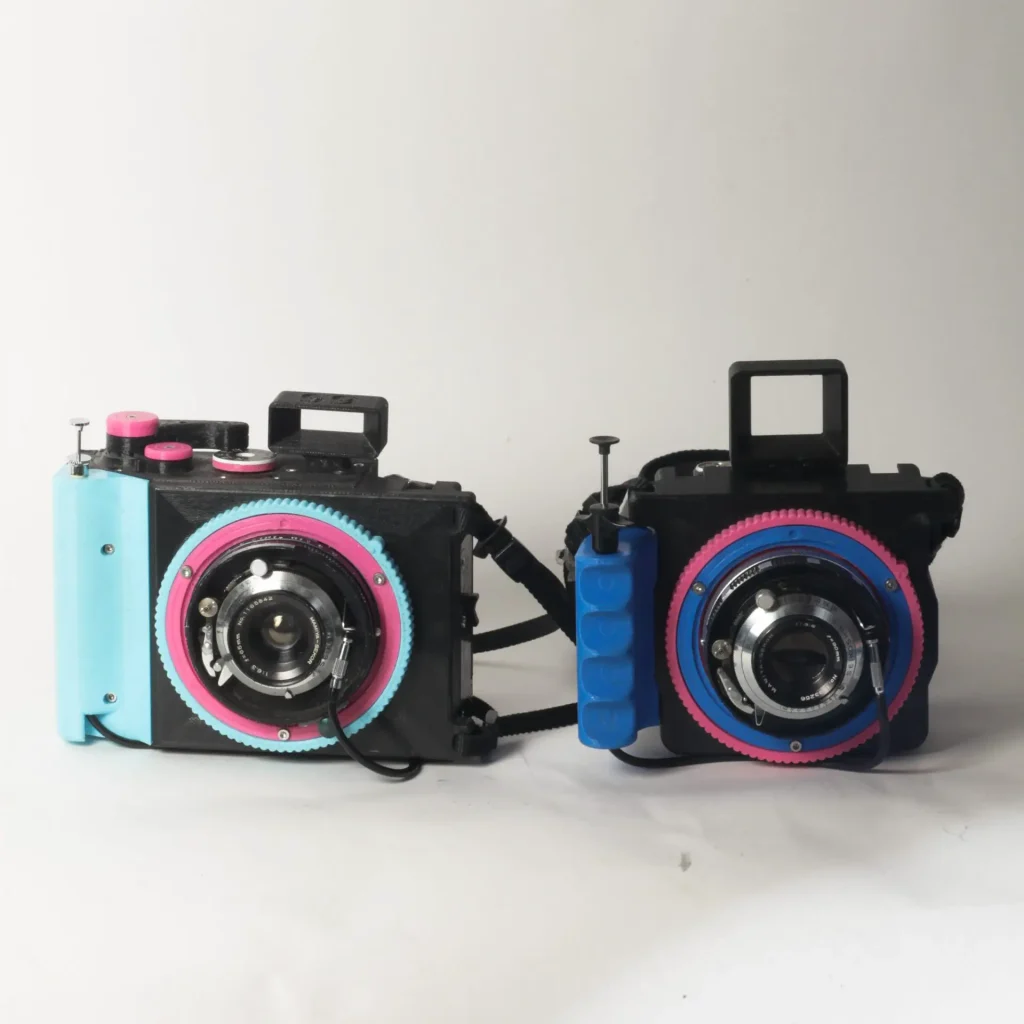
As much as I am interested in function over form, I found out on the streets of Montreal, the way a hot pink and baby blue camera looks can sometimes affect its function.
The first trip that I took the camera on was to Montreal for a long weekend. I live in Albuquerque and there’s not really the same type or amount of pedestrians out here as back east, so I was excited to take some street pics. I did a fair amount of corner lurking, waiting for something interesting to happen in good light.
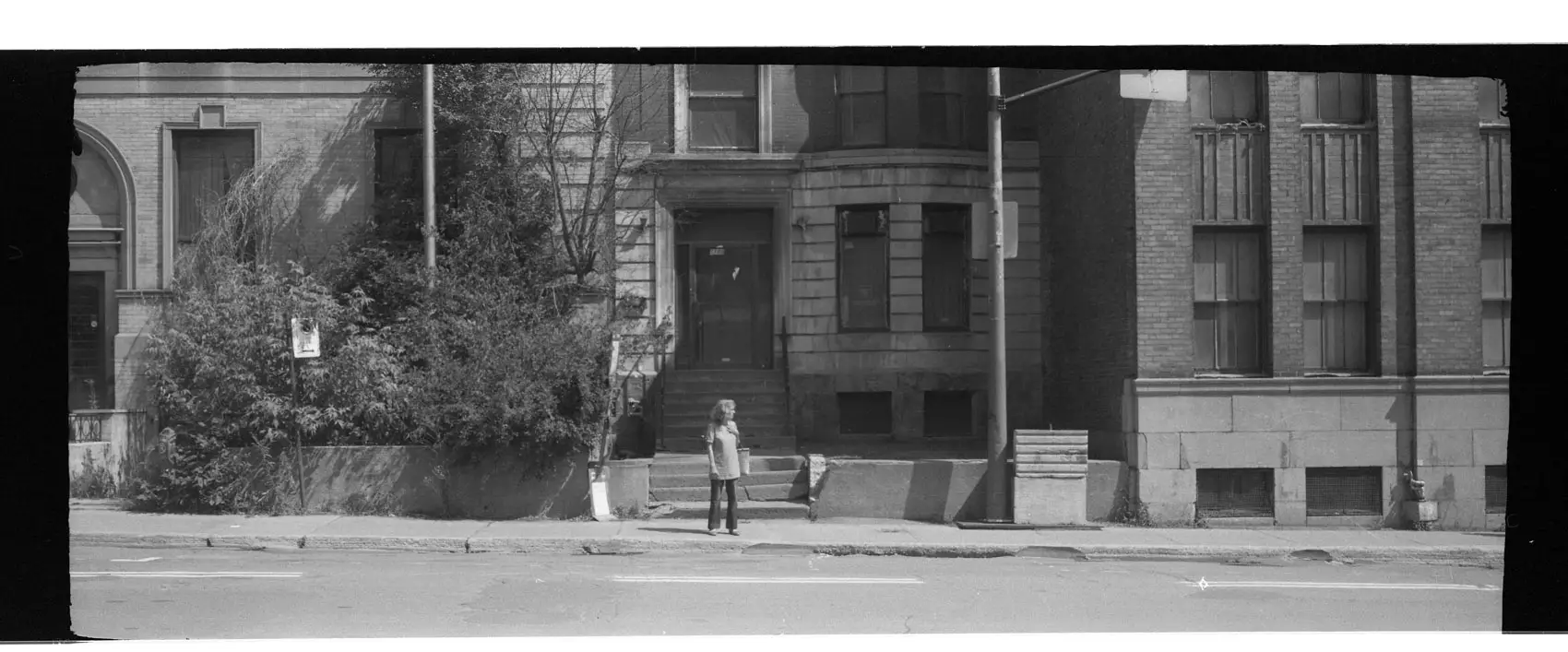
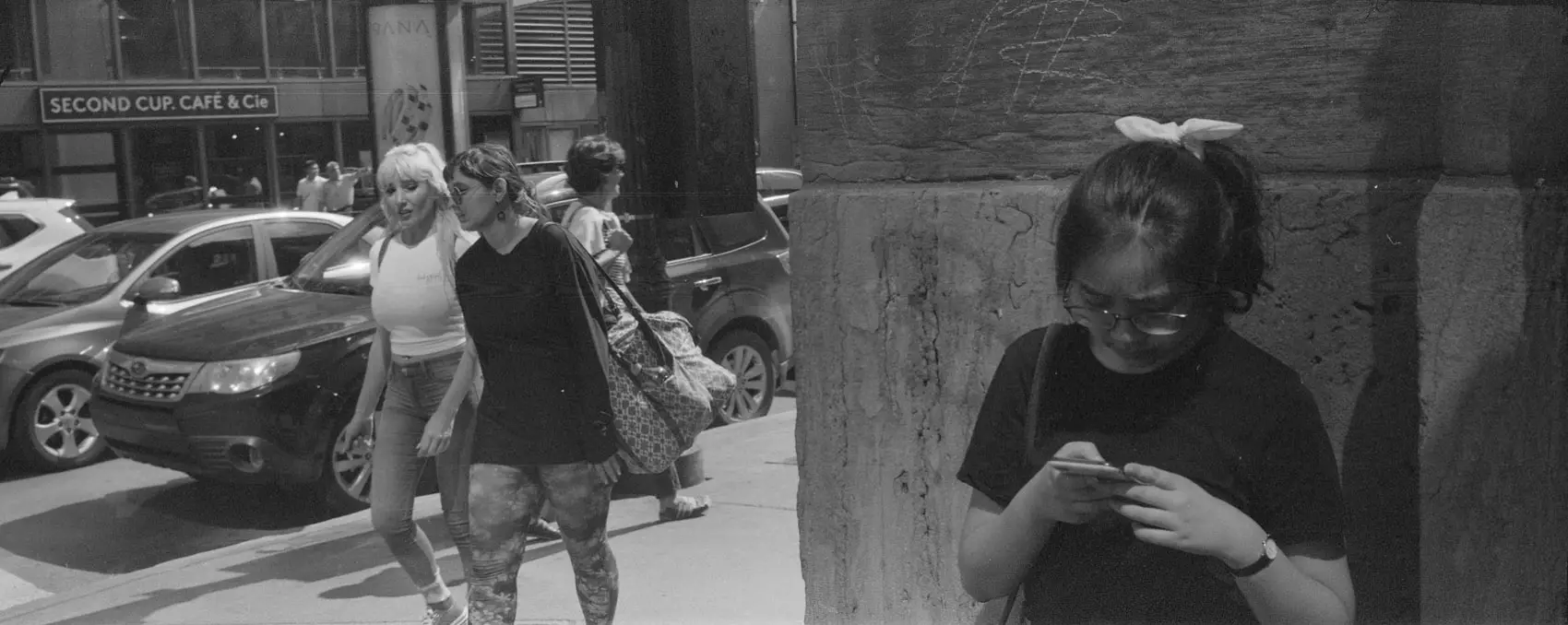
It was interesting being stopped often the first day, by photographers mostly and one photography professor at a university, asking about my camera. I was happy to chat with curious fellow enthusiasts for a bit about the camera and if I had more time in Montreal, I bet I could have just walked around for a few days and found a few ways in to the photo scene there, just by being stopped on the street. People who are interested in that sort of thing found me.
That all being said, I generally keep the camera at my side in my right hand, strap around my wrist, wound, prefocused at f/16 from 5 feet to infinity, shutter cocked, so if I just pop it up to my eye for a second to take a picture, nobody really notices. All well and good, but I might print myself an all black one the next time I have some time to shoot some street pics.
Here are some pics from the top of Mount Royal. They’re part of a series that I call ‘Selfie City’ , analog pictures of people taking selfies in front of famous places. I like the top one the best, but I’ve included a bunch of what I shot that day so you can see that even up close, being a 6 foot tall red-bearded monster who had sweat through his shirt, wielding a hot pink barbie dream cam, people pretty much ignored me.
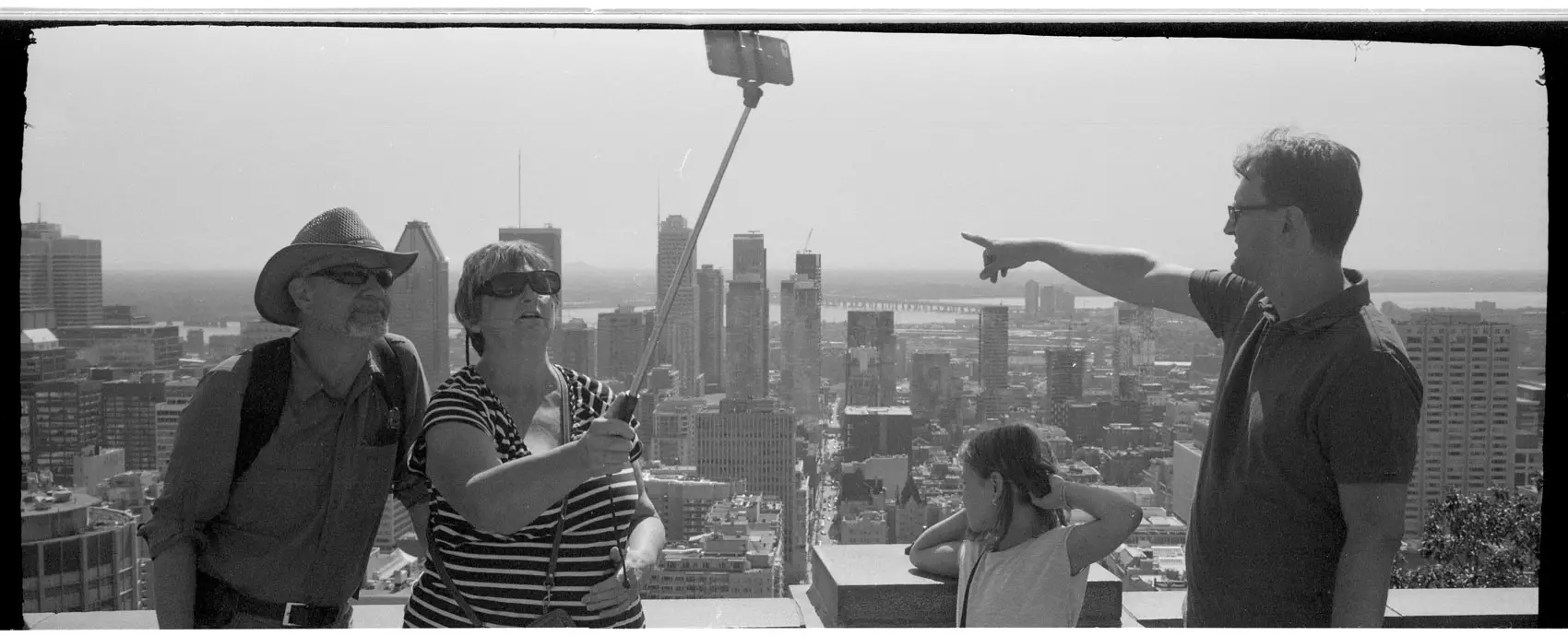
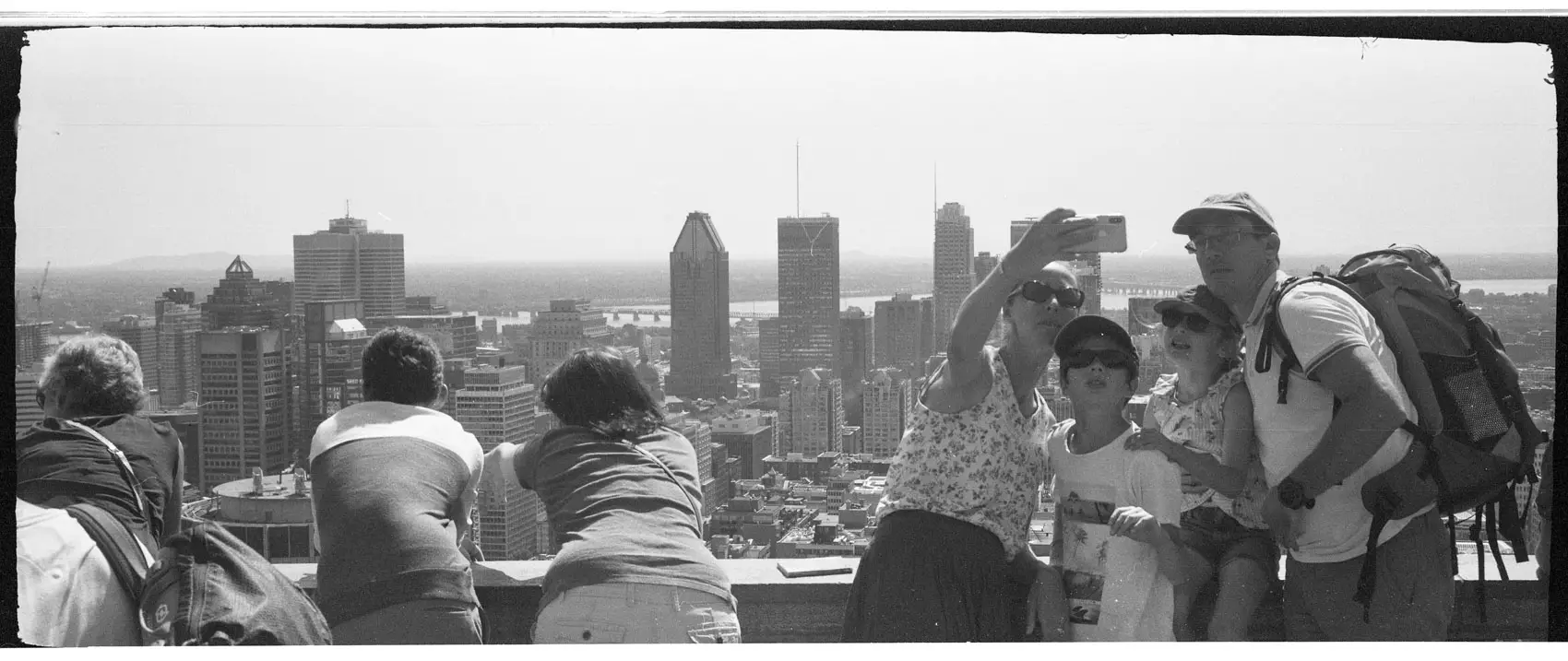
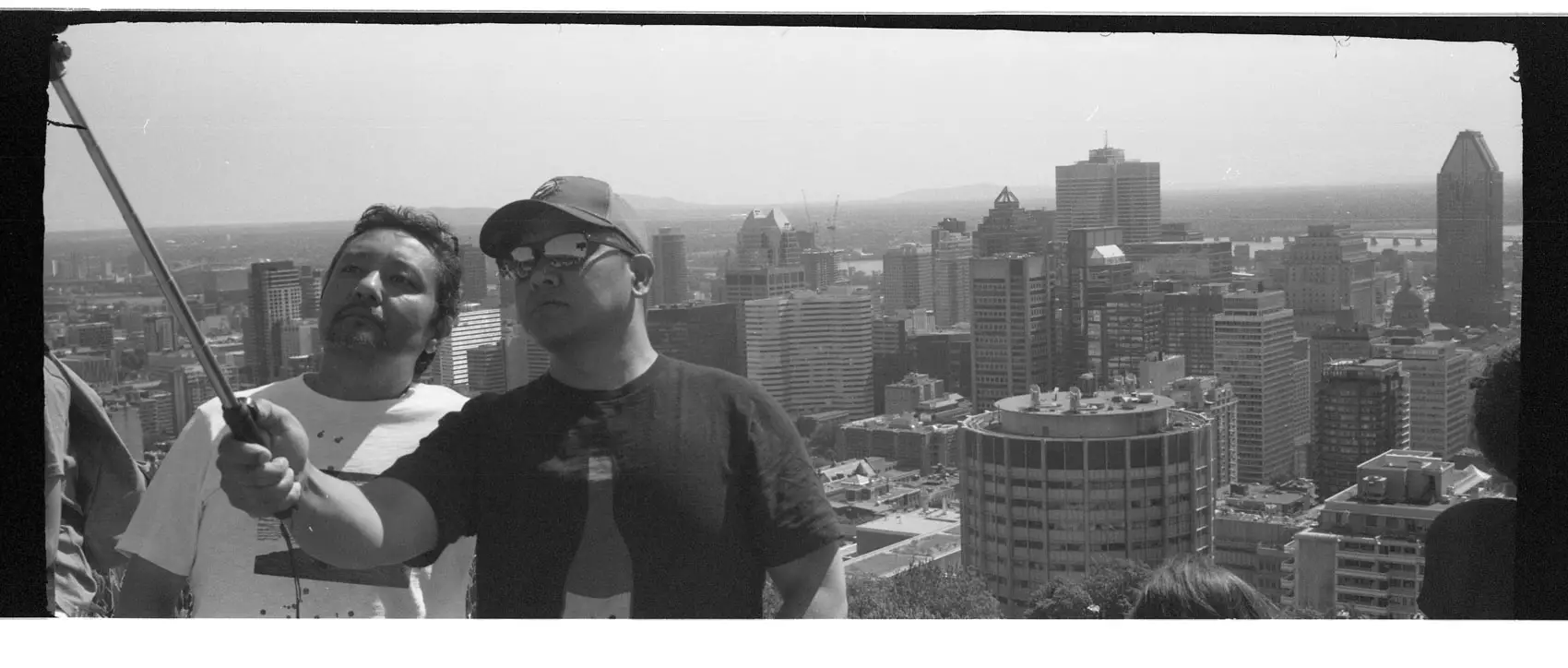
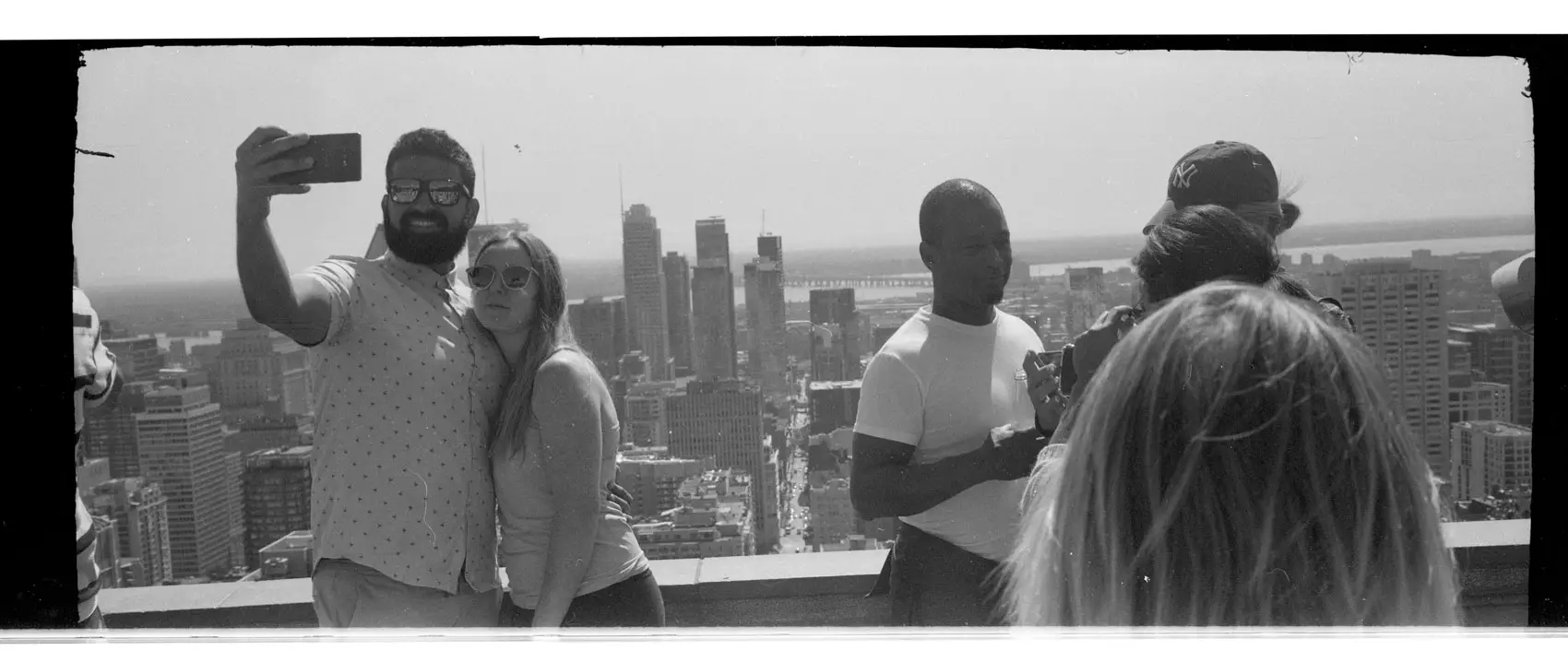
I stopped in New York City on my way back to Albuquerque on that trip. I got to spend a day showing Eduardo Pavez my camera, and shooting some street photos with him. I am not a great street photog, but NYC never fails to surprise me somehow. Here are a few pictures from my time in New York.
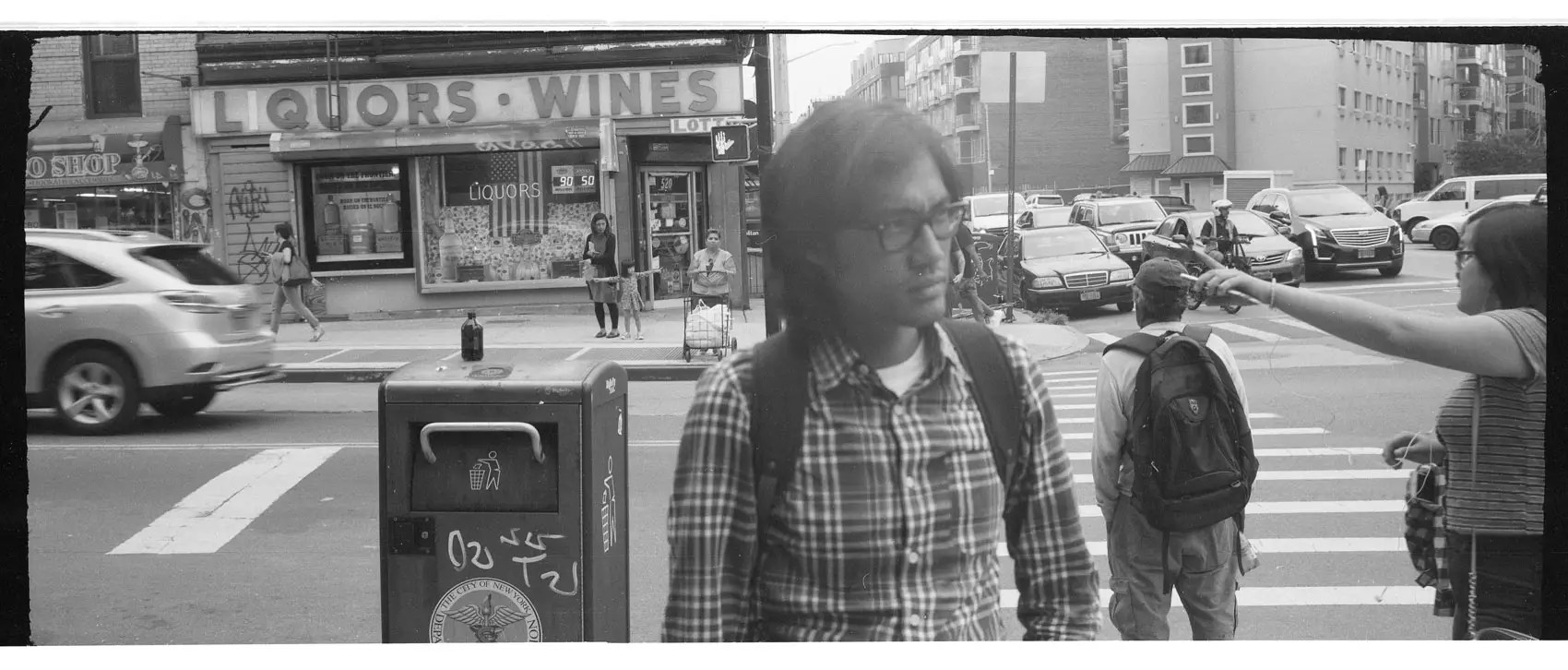
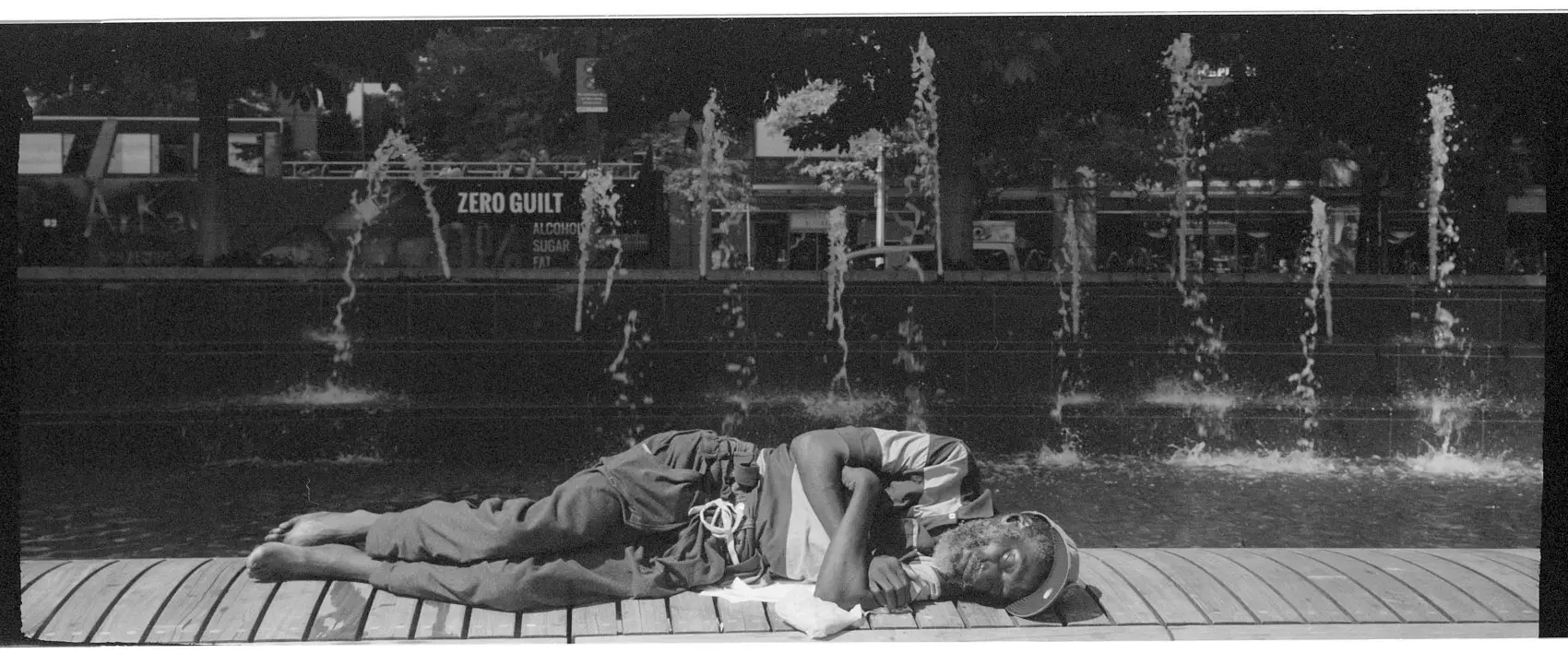
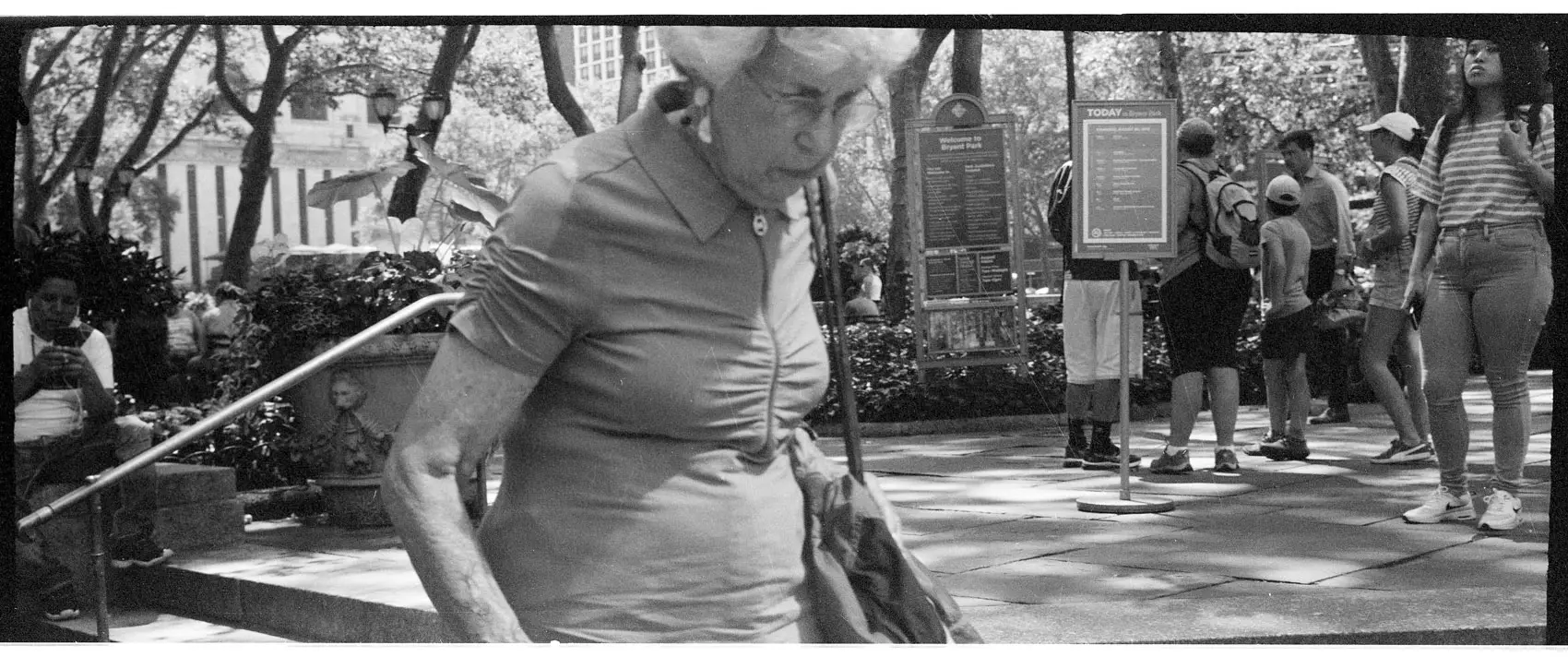
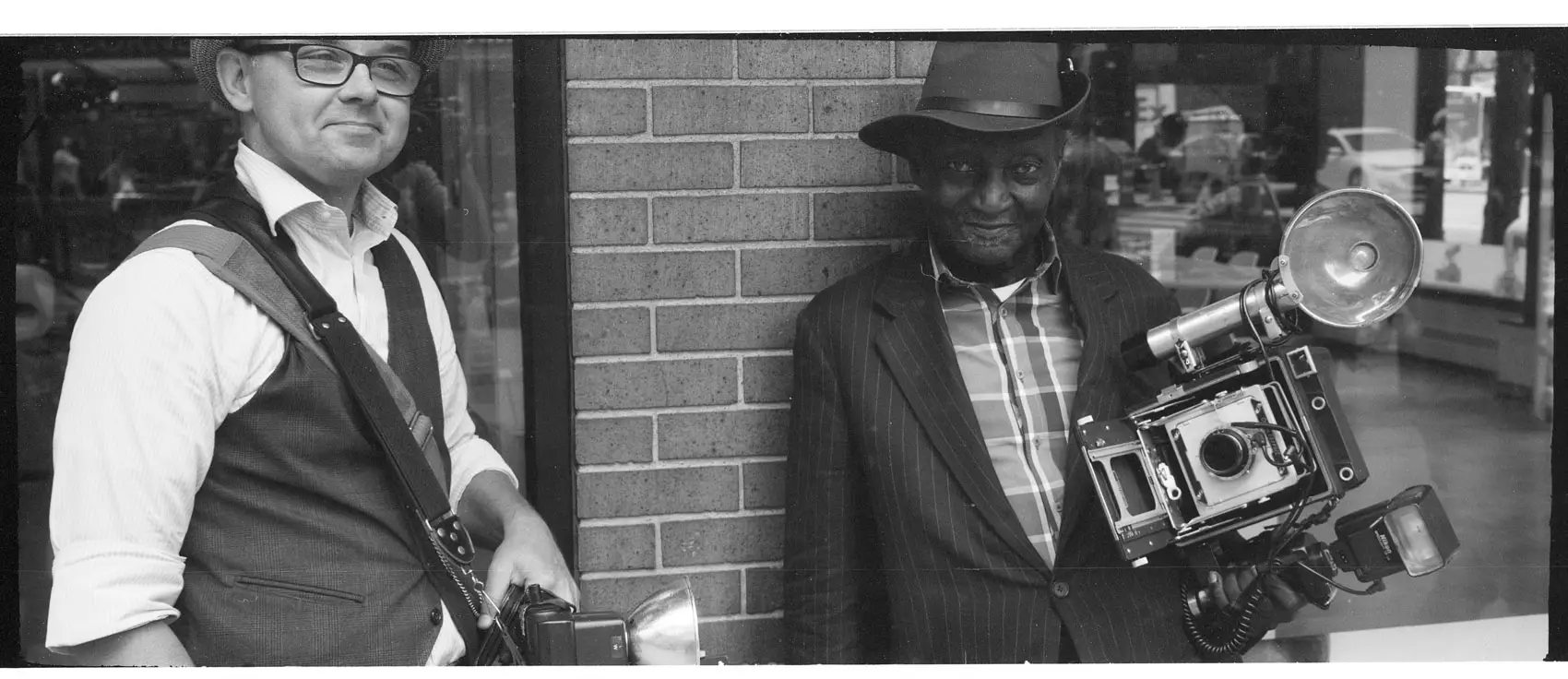
I got pretty much no attention from New Yorkers, which was fine by me. Again, scale focusing and keeping the camera cocked and loaded worked really well. I love how fast the camera is to use.
Soon after my return to Albuquerque, I went on a backpacking trip up to the continental divide with some of my friends.
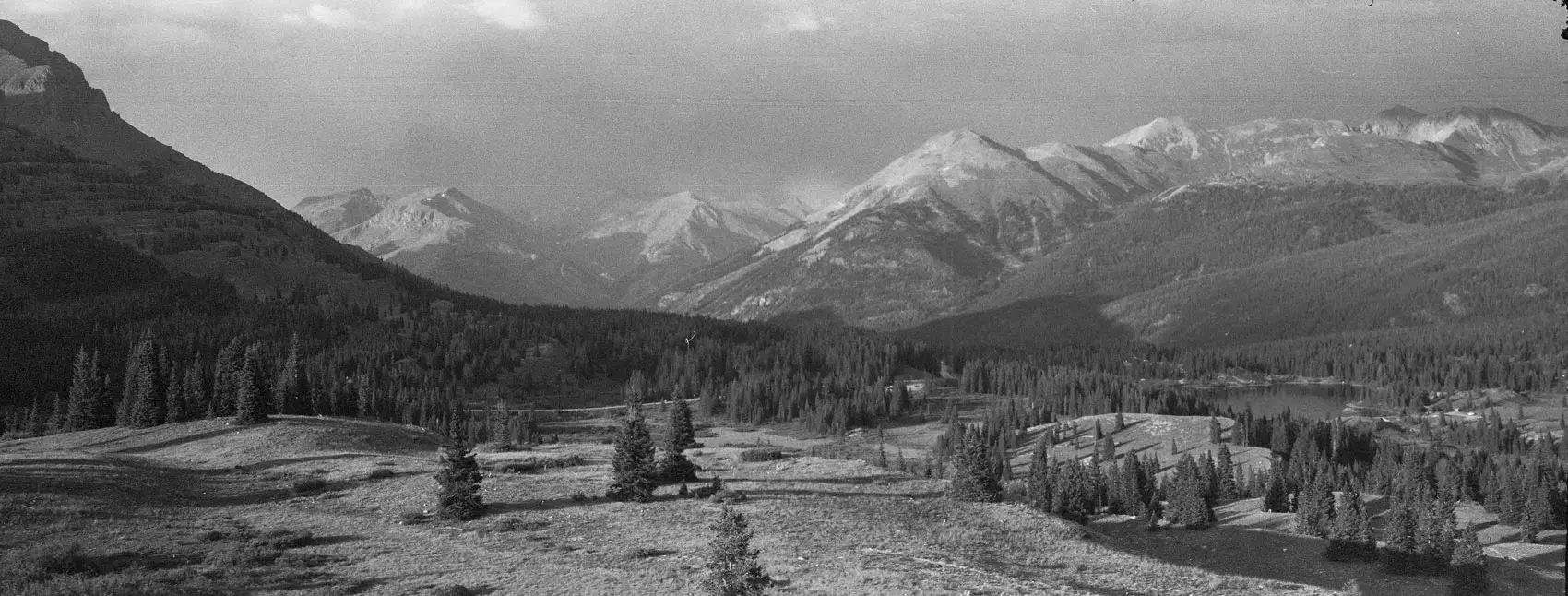
This next picture shows two early manufacturing problems that I had. On the top right corner of the frame you can see a little piece of un-trimmed plastic sticking out of the film gate, and there are a few scratches across the film. It was at least a month of shooting before I caught and fixed this. The film gate needed a better smooth sanding, and the pressure plate tension was adjusted, neither were errors in the CAD model, but both were important things to pay attention to when assembling the next camera after I fixed this one. Also, keeping sand out of your camera helps.
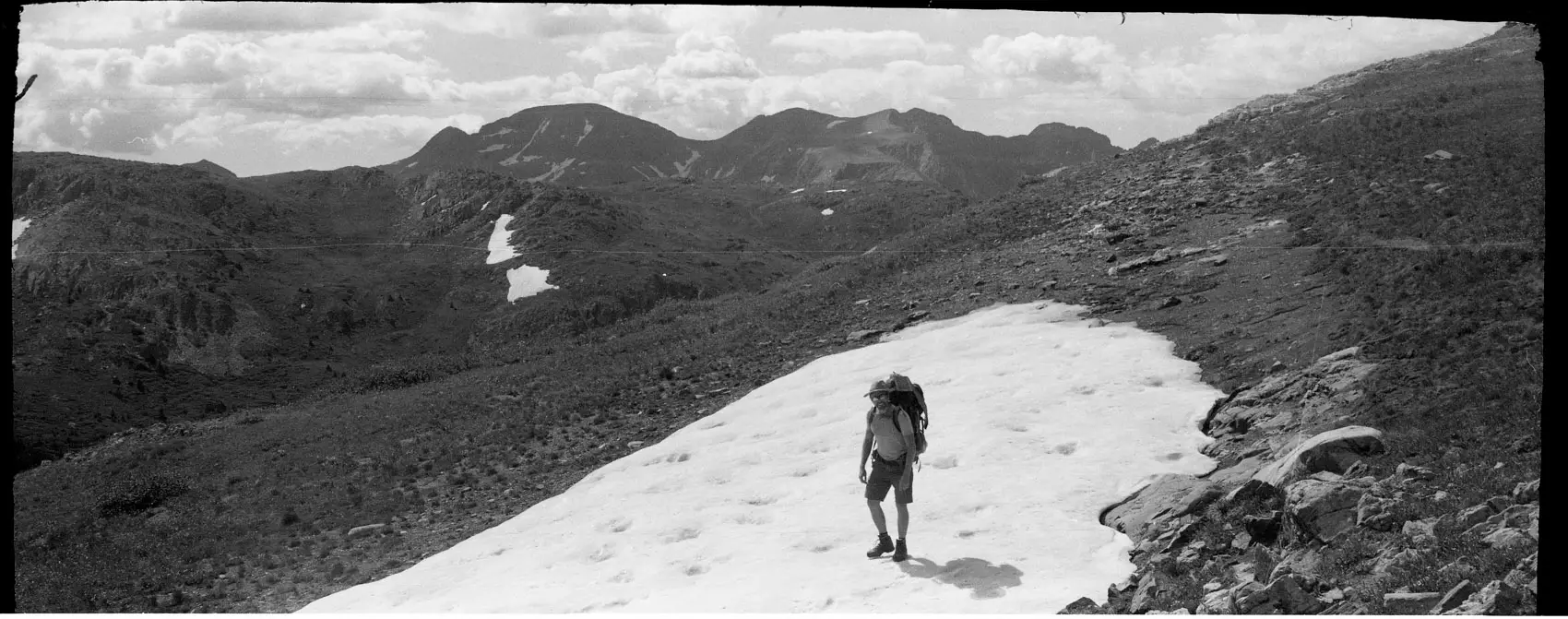
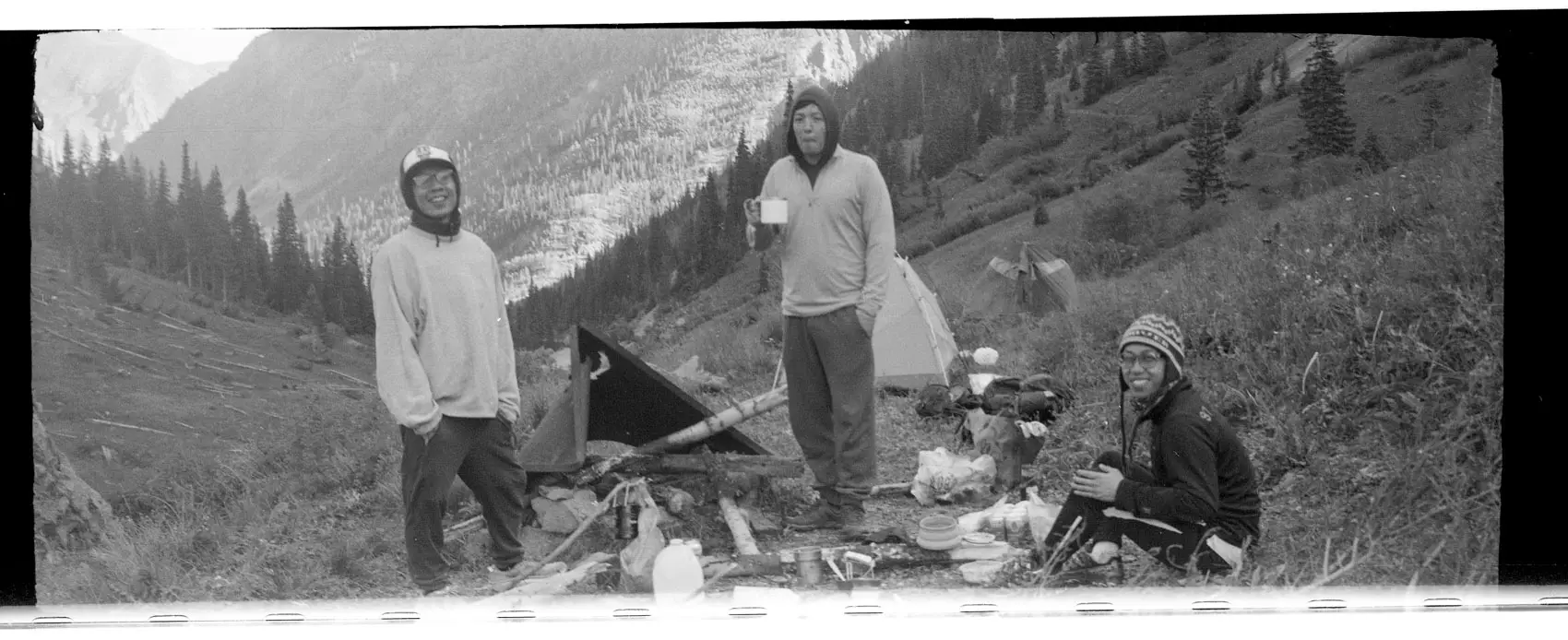
It got pretty cold up at 13,000 feet. I sleep in a bivy sack, which is just really a gore-tex shell for my sleeping bag. I am usually less worried about a bear licking my face than I am about a bear licking my camera in the middle of the night. Usually I’ll pack it down into a backpack, maybe under some waterproof piece of gear, and just lay all of my things beside me for the night. We used my backpack for a bear hang bag on that trip, I just left the Brancopan out on the grass next to me. It didn’t rain, but I woke up and the camera was covered in frost. Once the shutter warmed up, the camera worked just fine.
The mountains were colder than we would have really appreciated, so we headed down to the desert for the second half of our trip. We passed through this little town in Colorado, and while everyone was having a stretch and buying some beef jerky, I shot these pictures of the town. I love how they look so cinematic, like film stills from a movie shot at cinema anamorphic aspect ratio.
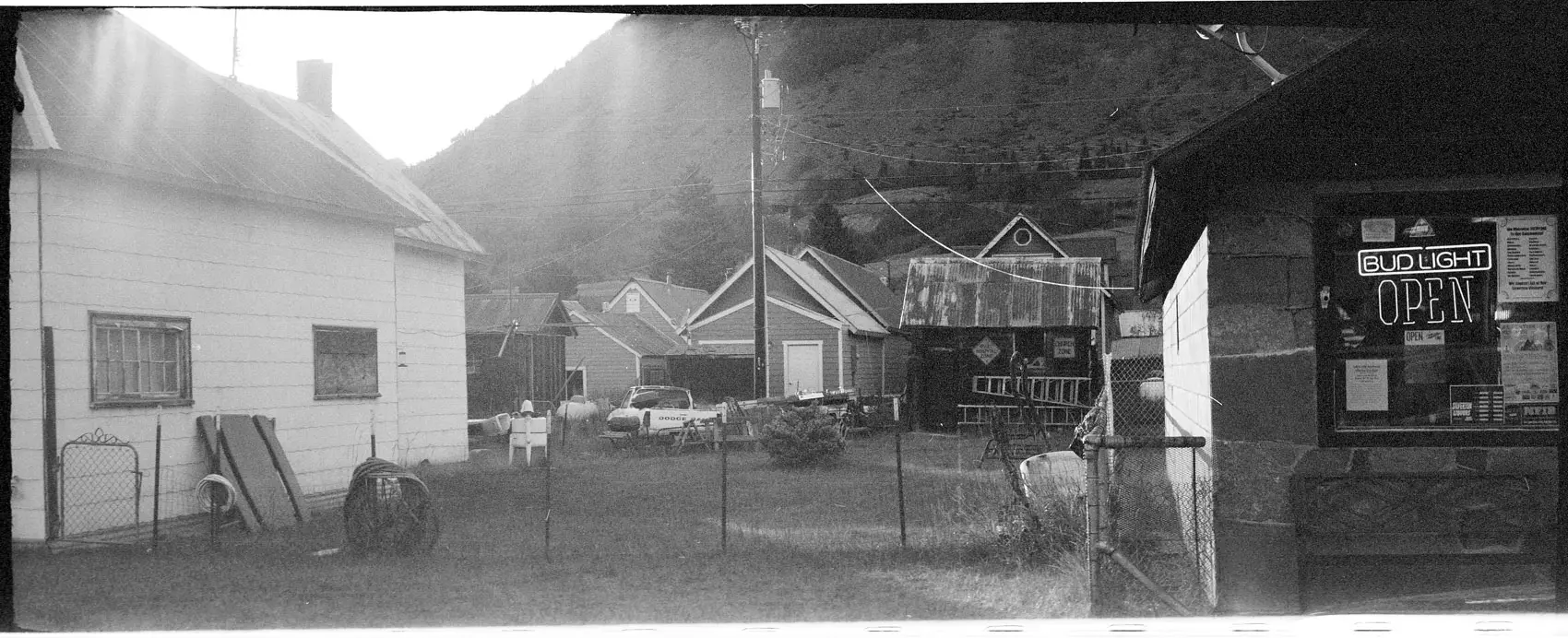
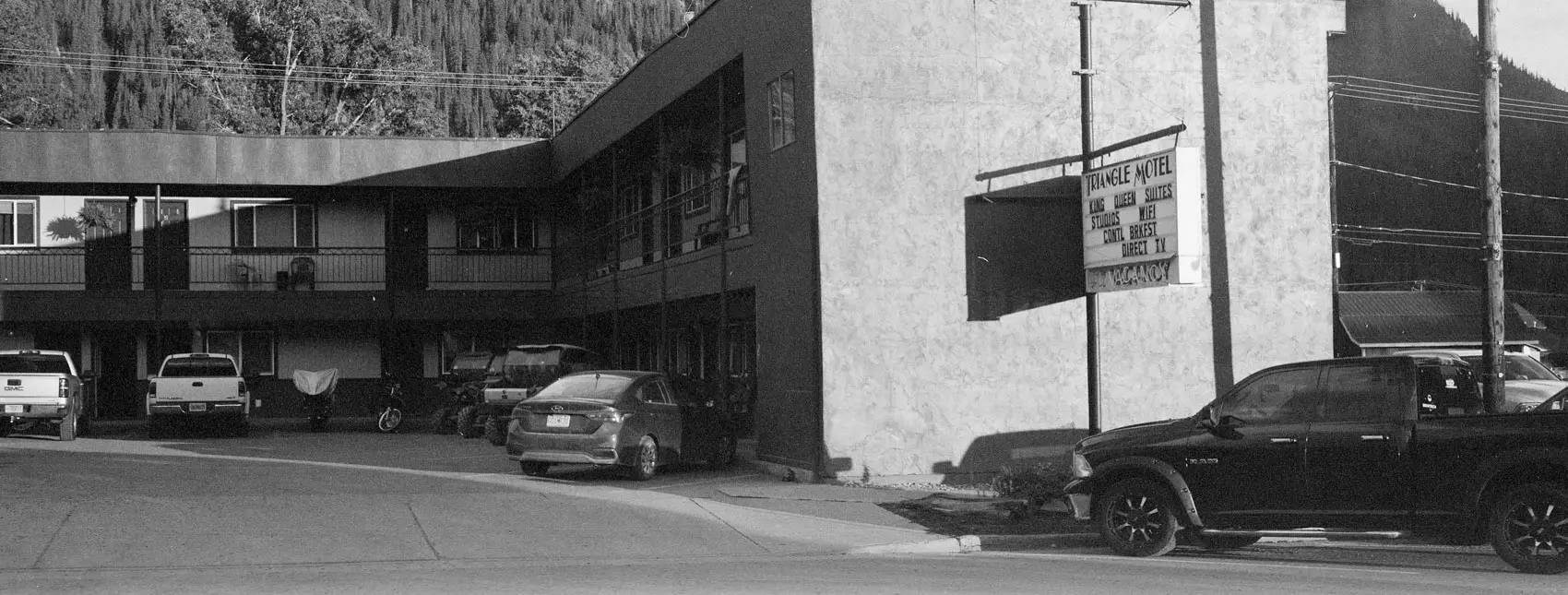
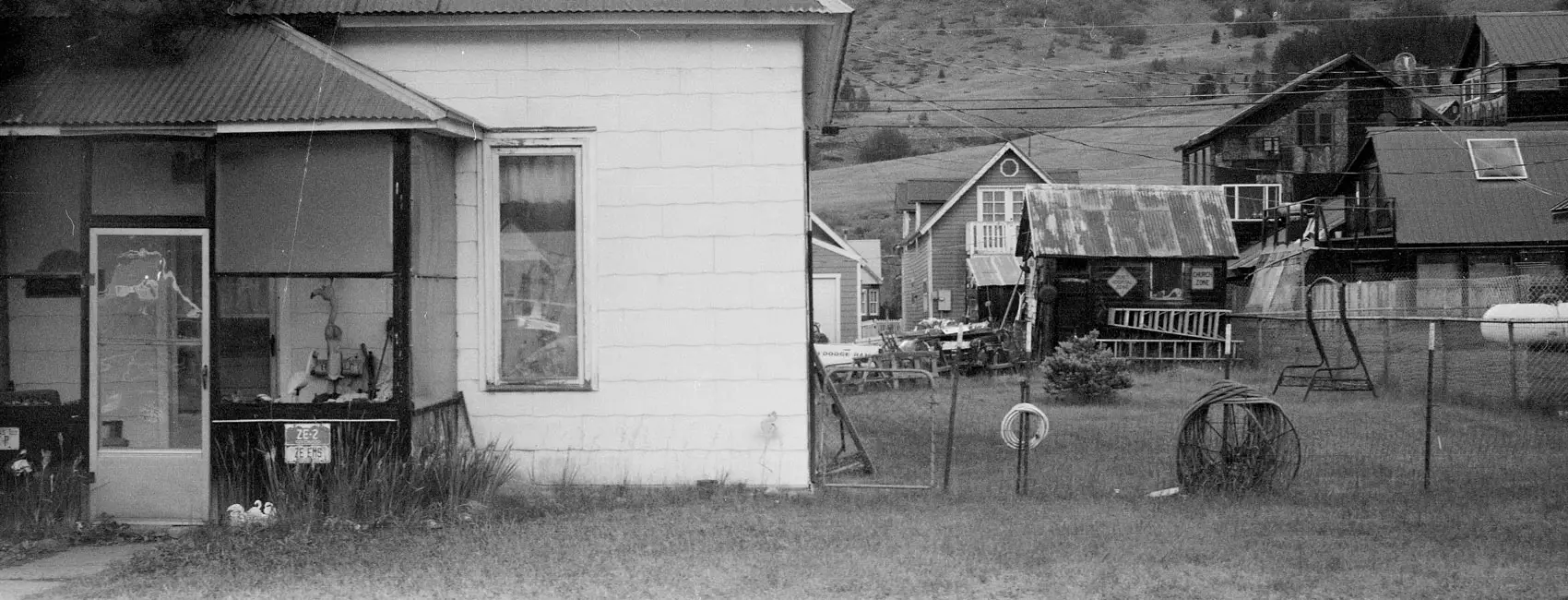
The desert is super fun, but you have to carry all the water you can, and there’s no shade anywhere. We had planned to stay out late into the evening, but drank all our water by midday, and had to hide under what rocks we could find that blocked just a bit of direct light, to get out of the 95 degree sun. I left my camera on rocks and sand all day that day, it got a little sandy, you could hear it in the gears at some point, but it kept on trudging.
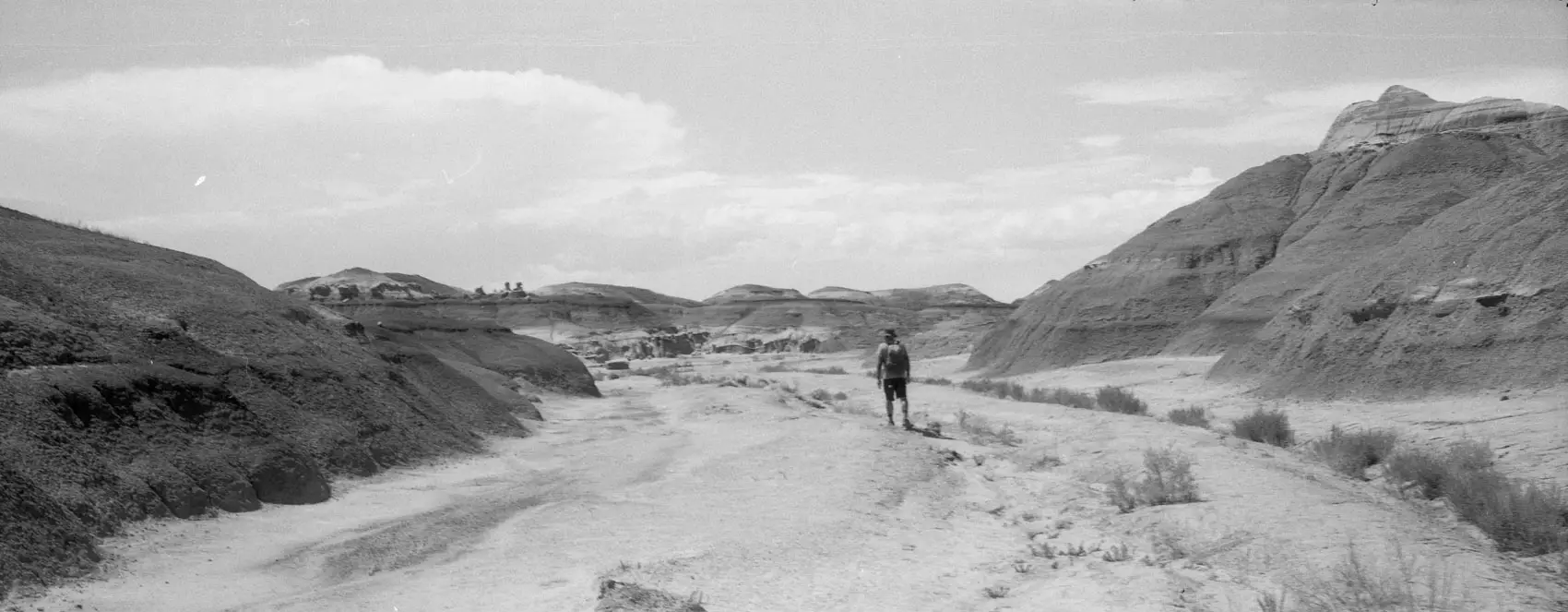
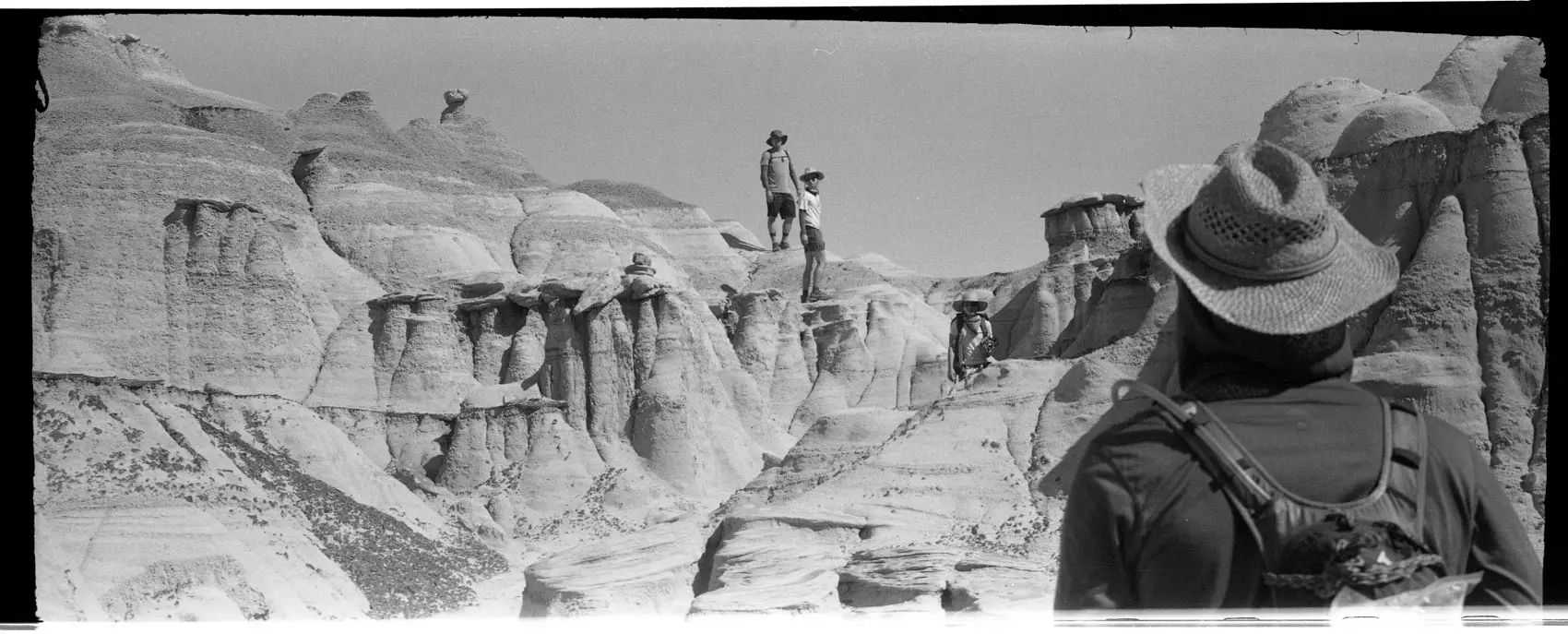
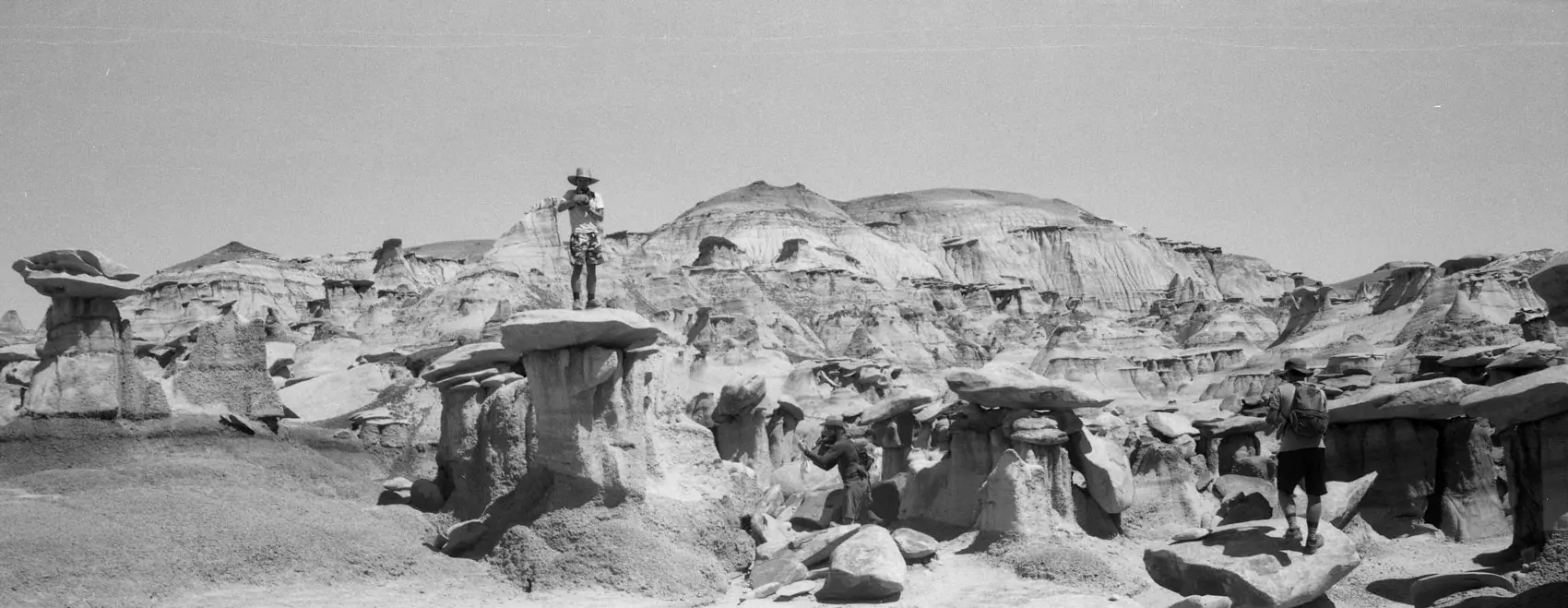
I also took the camera with me to Spain for almost a month, and got to visit Madrid and Ibiza, Malaga, Cordoba, Bilbao and Barcelona. I just packed a Homonculus and the Brancopan and a gallon ziploc of film. I made airport security and the civil guard hand check my film each one of 14 checkpoints that I went through in 3 weeks. I bent two flimsy cable releases by throwing the camera in my bag and banging it around on busses, trains and airplane overhead compartments. I have an indestructible cable release that I use with my Homonculus, but I can’t remember how I came to own it and I am currently looking for a place that sells them, so I can buy some more for the rest of my cameras. I haven’t scanned much of the Spain trip yet, and still have about 8 more rolls to develop, so I’ll save those pics to share for another day.
I can say that the camera has held up really well under daily use. I did, in all this time, make one adjustment to the camera with the allen key that I keep in my wallet. There are not too many other cameras out there that only require 1 tiny tool to adjust and repair. The camera didn’t really get much attention at all in Spain, except from Nico, when I got to visit him in Bilbao, and from Joaquin in Barcelona, who showed me his workshop and his amazing work on the OpenSX70 project. I have a pic of Joaquin, but I need to clean and scan it. It’s one of my favorites from the trip. Halfway around the world, sitting at another analog camera makers workbench. It was great.
I really like the aspect ratio of the movies of my childhood, and love using such a fast camera on the street. I can’t wait to do some more traveling and shooting.
Thanks very much for reading. If you’re interested in the Brancopan, or would like to build your own, please visit our Kickstarter
Here’s the video that I made to go with this article, there’s some redundancy, but maybe you’ll like that one too:
Share this post:
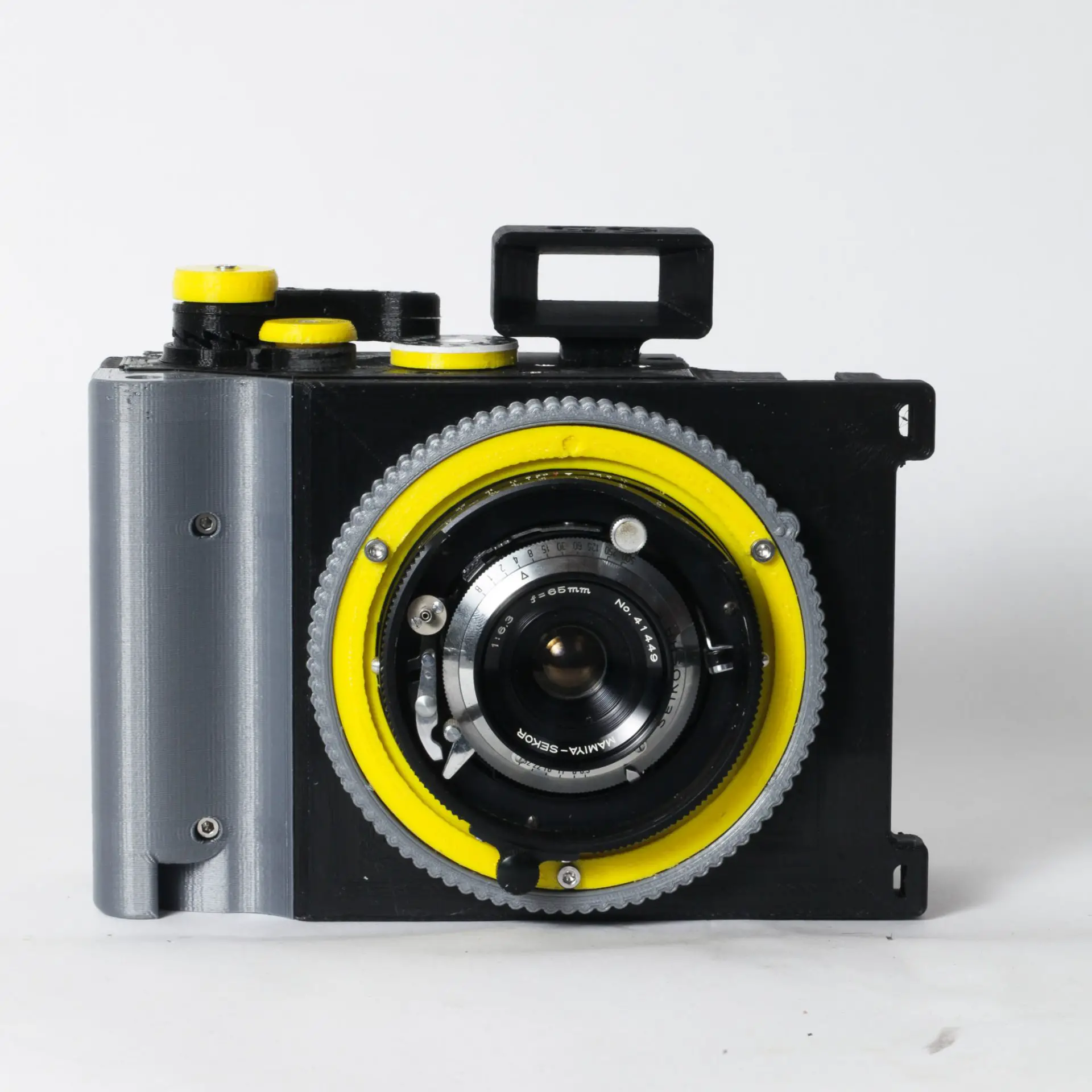








Comments
thorsten wulff on CAMERADACTYL Brancopan 35mm Panoramic Camera: A Preview with Pictures – By Ethan
Comment posted: 17/12/2019
Terry B on CAMERADACTYL Brancopan 35mm Panoramic Camera: A Preview with Pictures – By Ethan
Comment posted: 17/12/2019
Of course, there are easier ways to achieve this aspect ratio without having to build the cameras first and going even wider (using the 40mm on my Bronica and cropping the neg for instance) but then I suspect this is part of the fun of owning a unique camera.
evan bedford on CAMERADACTYL Brancopan 35mm Panoramic Camera: A Preview with Pictures – By Ethan
Comment posted: 17/12/2019
Thanks!
BF on CAMERADACTYL Brancopan 35mm Panoramic Camera: A Preview with Pictures – By Ethan
Comment posted: 17/12/2019
Ken Tuomi on CAMERADACTYL Brancopan 35mm Panoramic Camera: A Preview with Pictures – By Ethan
Comment posted: 17/12/2019
I appreciate your boundless and creative energy., you’re really making high end film formats affordable for the workin’ folk.
Alexander Seidler on CAMERADACTYL Brancopan 35mm Panoramic Camera: A Preview with Pictures – By Ethan
Comment posted: 19/12/2019
Alexander Dickson on CAMERADACTYL Brancopan 35mm Panoramic Camera: A Preview with Pictures – By Ethan
Comment posted: 28/12/2019
I'm curious about when you said "I use a 65mm f6.3 which has been de-limited to f4 on it almost exclusively". Did you modify the lens yourself?
Comment posted: 28/12/2019
Comment posted: 28/12/2019
The CAMERADACTYL Brancopan: a 35mm panoramic camera you can print at home | EMULSIVE on CAMERADACTYL Brancopan 35mm Panoramic Camera: A Preview with Pictures – By Ethan
Comment posted: 27/01/2020